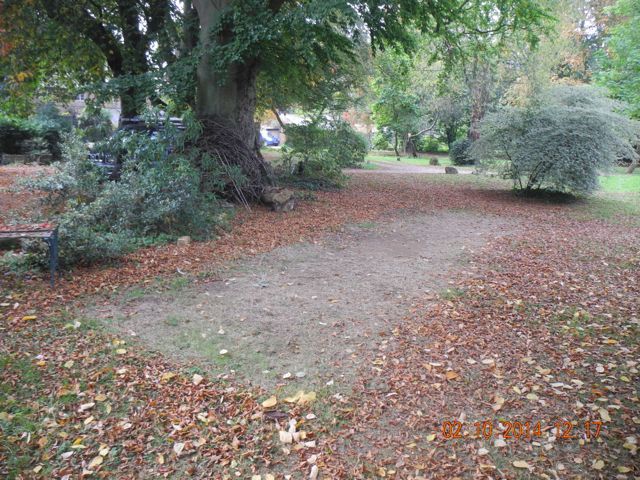
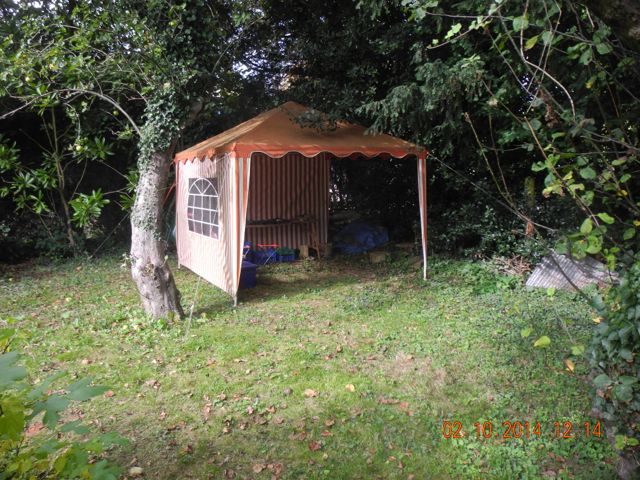
Archaeology at its most ephemeral: the site of the marquee, what will be left to see in 10 days... 10 weeks... 10 months? You get the idea, plus the new finds tent
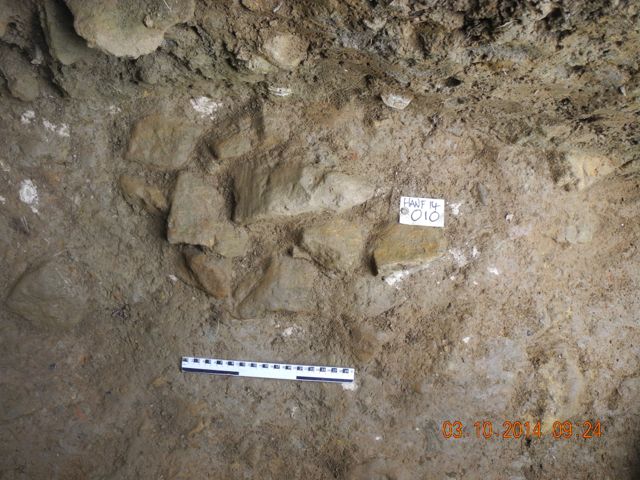
Rubble packed into a pit on the long section, a classic example.
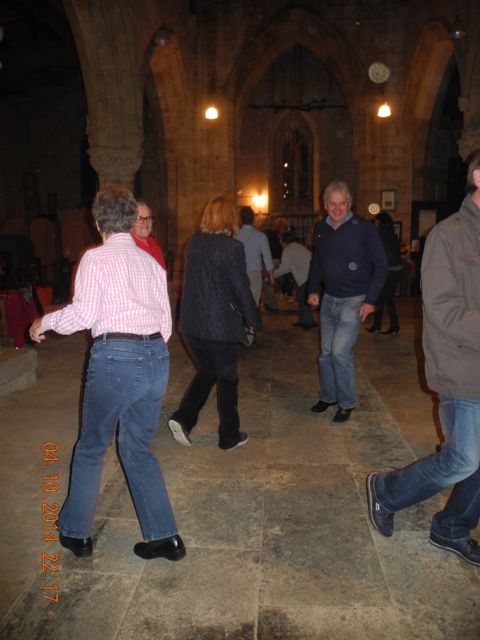
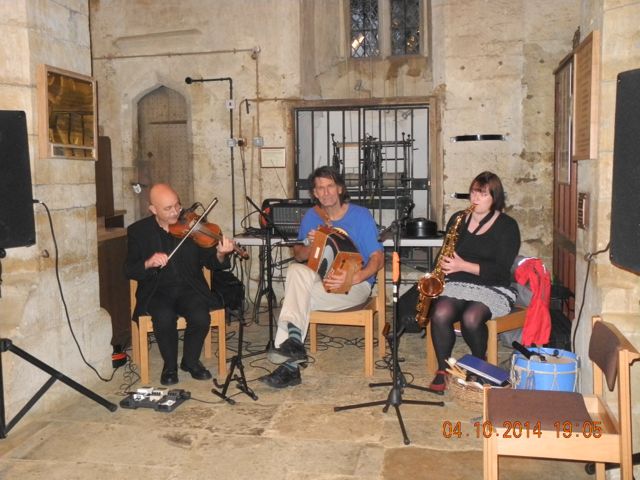
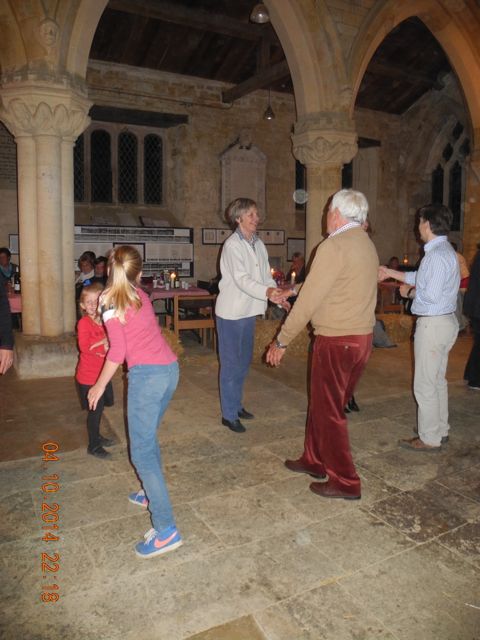
We do have other involvement with the community at Hanwell. Here we are playing for a harvest supper dance in the church and there's Sir Anthony's Clock - sadly not working at the moment - in the background.
Back to Enstone
to get things restarted there for the autumn season. Things had got a
little overgrown whilst we had been away but not as bad as I expected,
well nothing that a couple of days weeding and trimming couldn't sort
out...
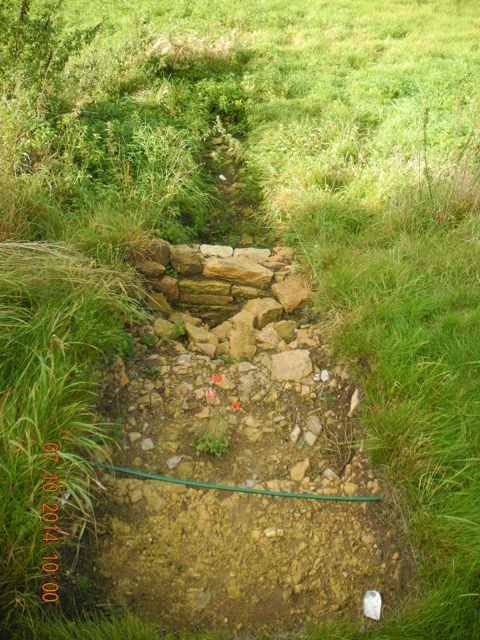

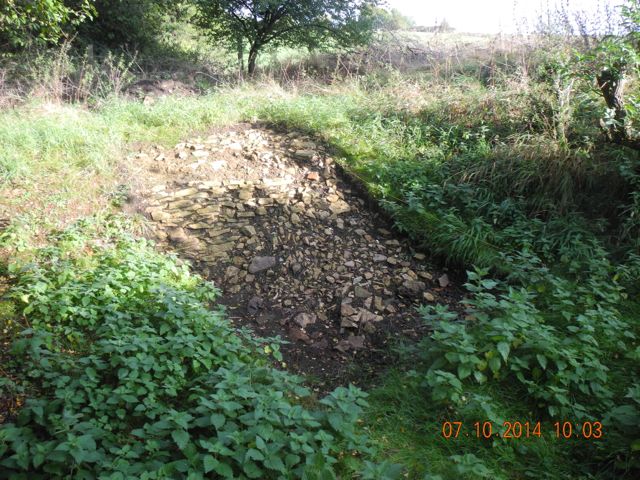
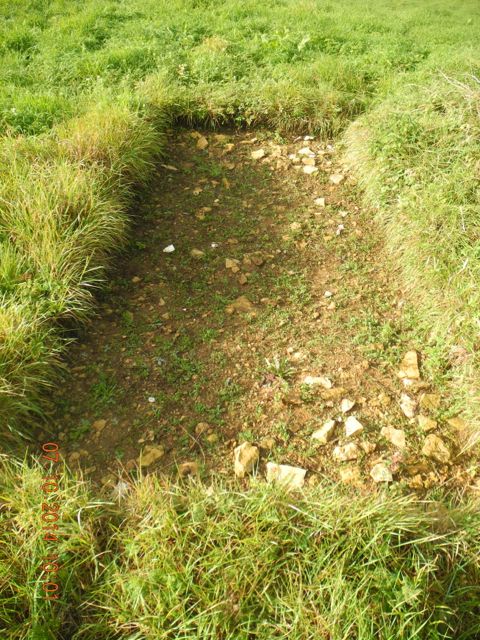
BEFORE
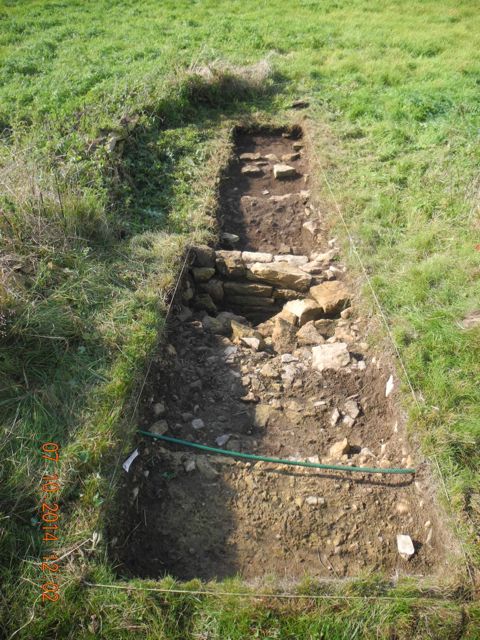
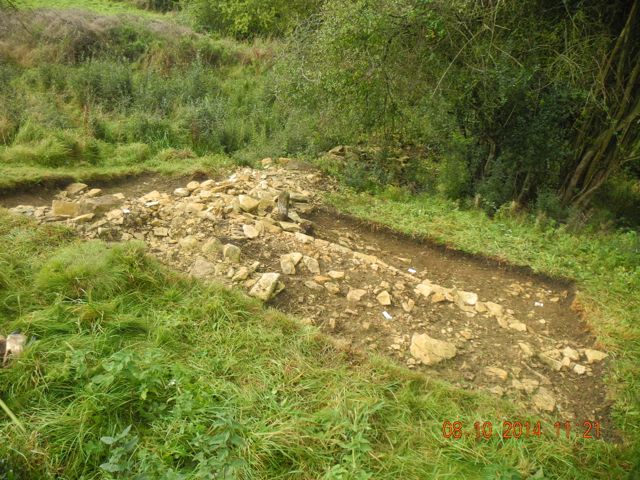
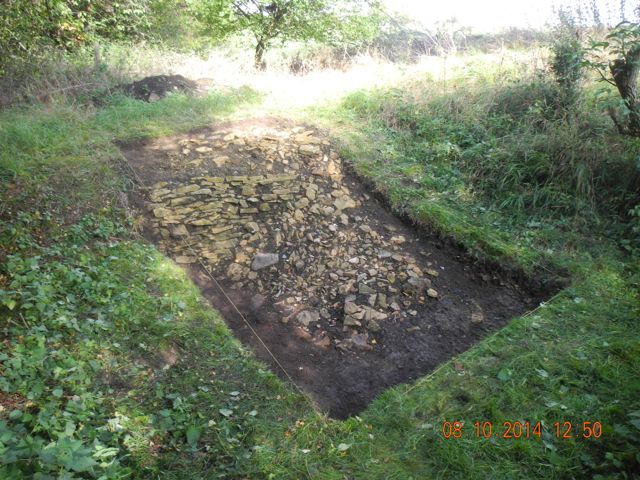
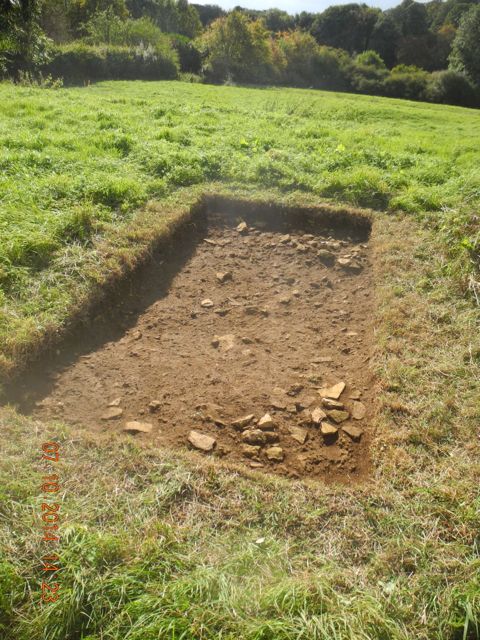




BEFORE




AFTER
After a patch of
wet weather the section edges on the long trench at Hanwell had come up
a treat. The parched edges had regained some of their colour to the
point where I just had to photograph the whole thing and indeed create
the option of stitching them all together using careful placement
(every 2 metre section) and leveling of ranging rods. At the same time
Peter was making valiant efforts, not to mention qualifying as a
contortionist, drawing the foundations of the east - west wall at the
Temple of Flora. Christopher had been busying himself with clearing the
intermediate terrace above the sunken garden. It's revealed as a major
construction for which we have no firm dating evidence but I'm
beginning to query its relationship with the walling on the
terrace round the corner. Further digging at the top of the long
section exposed the fact that our pit was not a pit at all but rather a
shallow scoop with plenty of fallen rubble and plaster/mortar embedded
in it It all belongs to the phase of destruction and collapse yet seems
to directly overlie the construction trench for the walling.
What seems to be missing, and this is puzzling, is anything which looks
like a period of use. For example I would have confidently expected a
buried turf line showing up evidence of a former grassy bank at the
foot of the wall subsequently overwhelmed and buried by the actions of
the demolition squad. I'm clearly missing something here.
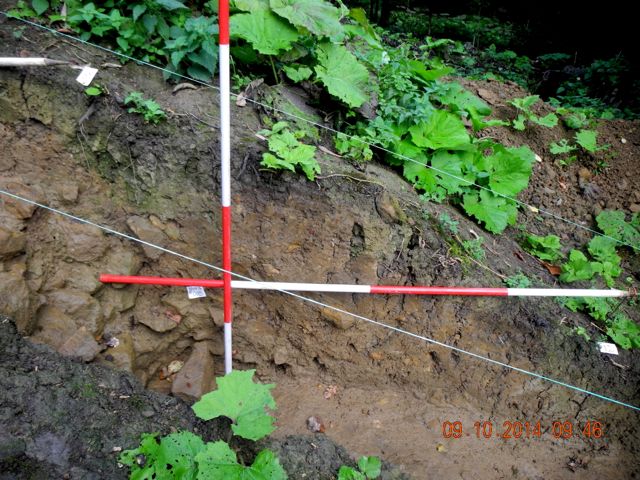
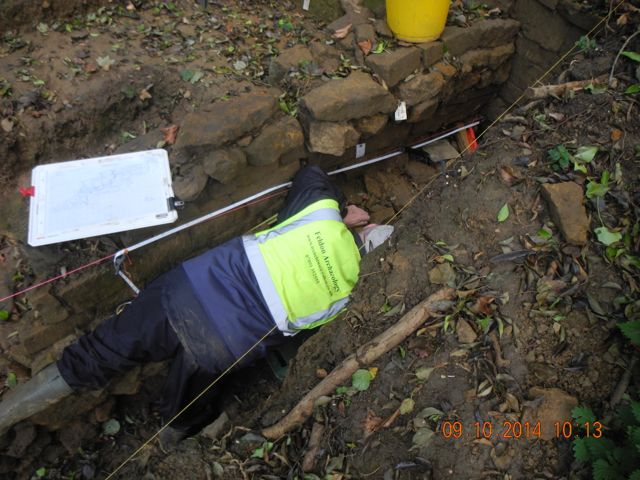
Section photograph - there are 15 more like this (HANF14 005 from the south. in case anyone's interested). Peter does his best Alice impersonation, unfortunately no white rabbits only brown ones.
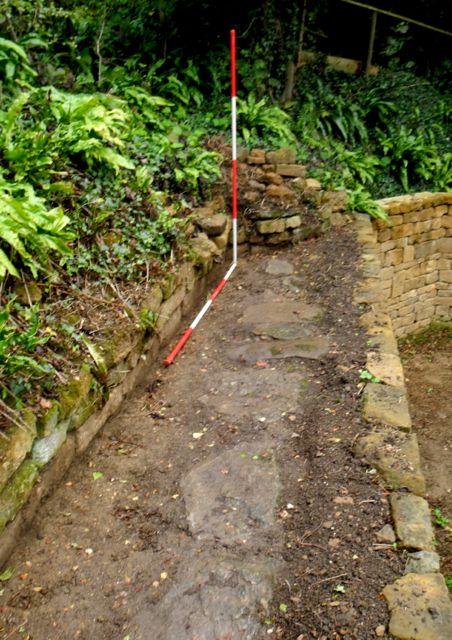
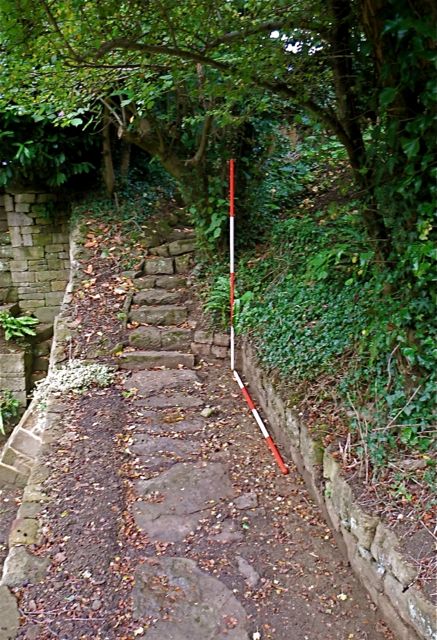
The terrace above the sunken garden - the slabs are really quite massive. View looking west and view looking east.
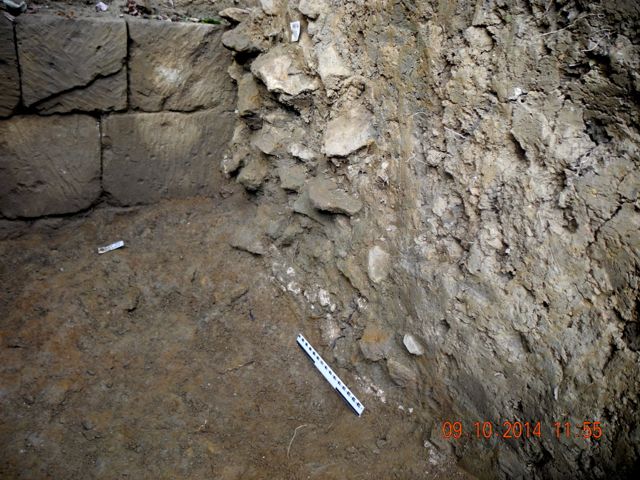

At the foot of our top wall (HANF14 007) destruction rubble above mortar and plater fragments plus the red sandy fill of a construction trench along the face of the wall plus a rough and ready rubble foundation course or two.
Back at Enstone we made a fresh start on the open area on the top terrace. This involved beginning to remove the upper layers of stone and soil which created the famous patterns revealed by geophysics. Underneath it all there seemed to be a fairly undifferentiated spread of rubble derived from the underlying bed rock. This seems to suggest that the alignments, whatever they are, were created by shifting surface rubble from those areas assigned for cultivation on to the paths or whatever they were. As part of this rather a nice prehistoric flint blade emerged.
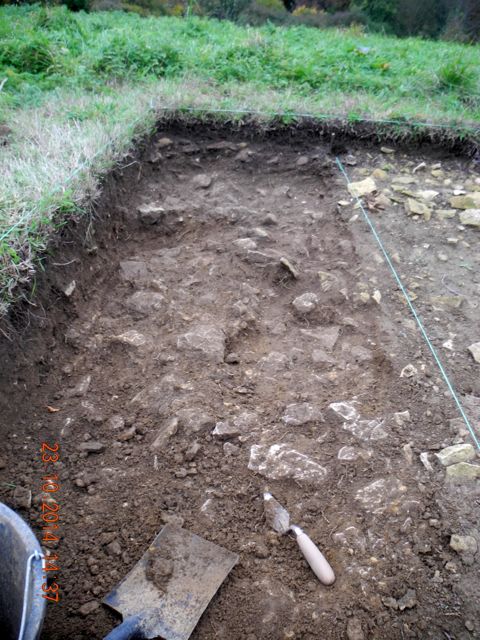
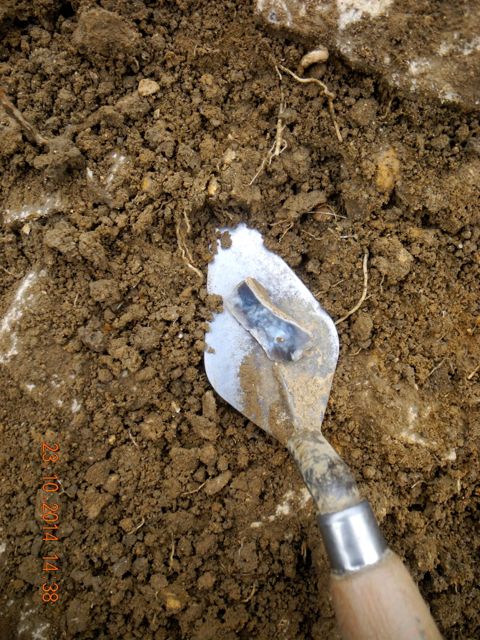
Rubble, rubble, rubble and a single flint blade at Enstone.
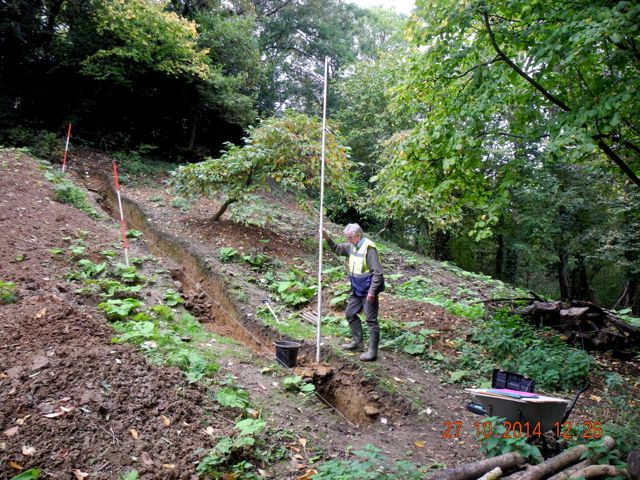

Catching up with recording, Mike helps with levels. On the lower terrace wall the full thickness is at last revealed.
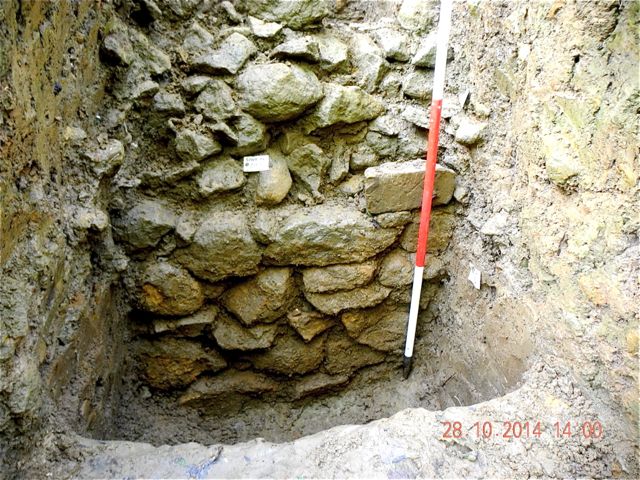
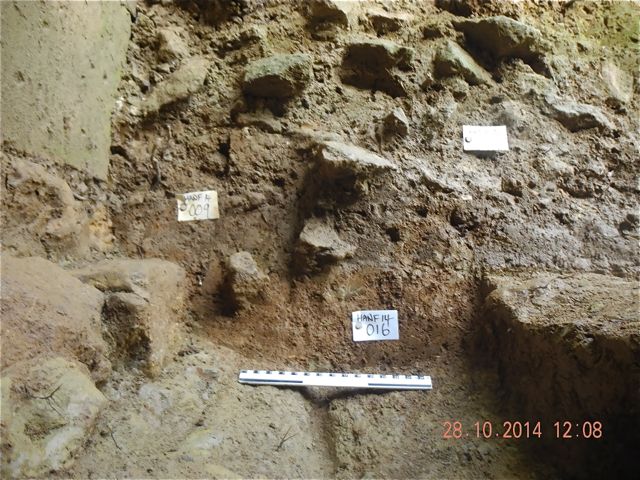
At the start of the last week we'd assumed there was just a single course of foundation... on no there wasn't. At the top terrace wall more work was done to fathom the foundations there.
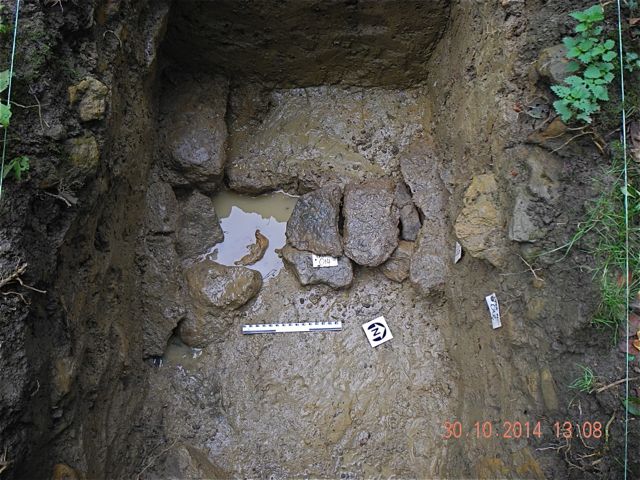
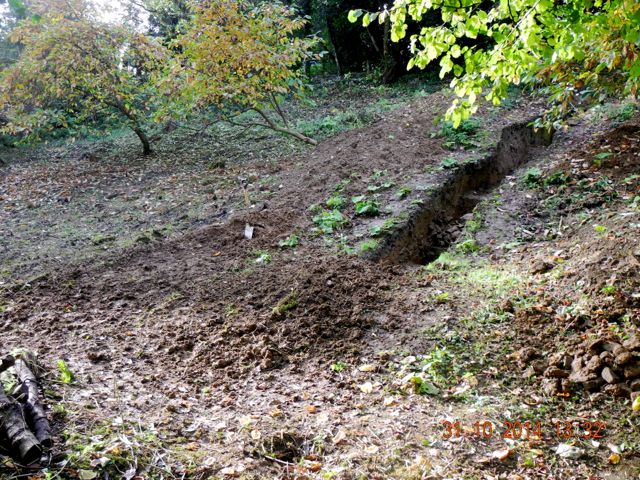
The fill of the bottom drain was emptied out and the capping stones replaced for a final photograph before... the back filling begins... sigh.


Section photograph - there are 15 more like this (HANF14 005 from the south. in case anyone's interested). Peter does his best Alice impersonation, unfortunately no white rabbits only brown ones.


The terrace above the sunken garden - the slabs are really quite massive. View looking west and view looking east.


At the foot of our top wall (HANF14 007) destruction rubble above mortar and plater fragments plus the red sandy fill of a construction trench along the face of the wall plus a rough and ready rubble foundation course or two.
Back at Enstone we made a fresh start on the open area on the top terrace. This involved beginning to remove the upper layers of stone and soil which created the famous patterns revealed by geophysics. Underneath it all there seemed to be a fairly undifferentiated spread of rubble derived from the underlying bed rock. This seems to suggest that the alignments, whatever they are, were created by shifting surface rubble from those areas assigned for cultivation on to the paths or whatever they were. As part of this rather a nice prehistoric flint blade emerged.


Rubble, rubble, rubble and a single flint blade at Enstone.
Time pressure was making itself felt at Hanwell as we had planned
a full week of activity over the half term break. This involved
completing a touch more excavation and all of the recording so we were
in a position to start back-filling, we have to create the optimum
conditions for the snowdrops to reassert themselves. One of my big
mistakes on the lower terrace wall was to underestimate the depth of
the foundations. We should have known by comparison with the walling at
the Temple of Flora that this would be the situation but I just hadn't
put it all together. Once that was all sorted out and drawn and the
sections recorded it was time to start to fill in the trenches. I had
this happy picture of cool crisp autumn days working up a manly sweat
swinging the shovel. As it was the temperature had soared into the
twenties and it was like working in the jungle, oh well, no doubt
winter will arrive eventually.


Catching up with recording, Mike helps with levels. On the lower terrace wall the full thickness is at last revealed.


At the start of the last week we'd assumed there was just a single course of foundation... on no there wasn't. At the top terrace wall more work was done to fathom the foundations there.


The fill of the bottom drain was emptied out and the capping stones replaced for a final photograph before... the back filling begins... sigh.